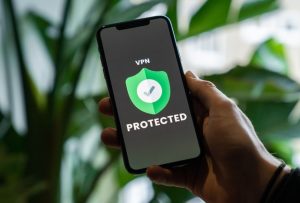In today’s digital world, Malicious code is a pervasive threat. It can come in the form of malicious files and websites, making it difficult to protect yourself and your data. Fortunately, there are some key strategies that you can use to ensure that you don’t download malicious code. In this article, we’ll discuss three of the most effective ways to avoid downloading malicious code.
The first strategy is to install antivirus software on all your devices. Antivirus software protects your device from viruses that can destroy your data, slow down or crash your device, or allow spammers to send email through your account without permission. Cybercriminals who steal financial services credentials through phishing and fraudulent websites also use malware known as Man-in-the-Middle attacks which eavesdrop on transactions between two parties without either party knowing about it. Installing antivirus software will help protect against these types of attacks as well as other forms of malware such as ransomware and spyware which can be used by cybercriminals for various nefarious purposes such as stealing personal information or locking up computers until a ransom is paid.
The second strategy is to limit accessing personal accounts from public computers that could be infected with spyware or Malware, or may use an unsecured Internet connection which could leave you vulnerable to attack by hackers looking for easy targets. If possible try using only secure networks when accessing sensitive information such as banking details or passwords for online accounts so that any data sent over the network cannot be intercepted by third parties who may have access to the same network connection.
Finally, make sure all devices are kept up-to-date with security patches and updates so they are not vulnerable to new threats released by cybercriminals every day in the form of new viruses and other forms of malware like ransomware which encrypts files until a ransom is paid in order for them to be decrypted again safely . Keeping devices updated will help ensure they remain secure against any new threats released into circulation online so you don’t become an easy target for hackers looking for unprotected systems they can exploit easily .
1. Use an Antivirus Program
Using an antivirus program is the first key strategy to avoid downloading malicious code. Antivirus software scans computer files and memory for patterns that indicate the possible presence of malicious code. It can detect and delete any malicious code it finds, ensuring that you don’t download anything dangerous. However, it is important to keep your antivirus program updated with the latest virus definitions in order for it to be effective against the newest threats. Additionally, antivirus software works on one of two principles: either scanning programs and files as they enter your device or scanning all programs and files already on your device. By running regular scans with an up-to-date antivirus program, you can ensure that any malicious code present on your device is quickly identified and removed before it causes any damage.
2. Don’t Download Files From Untrusted Sources
It is essential to only download files from trusted sources that you know are secure. This will help protect your computer from malicious code. When downloading any file or software, it is important to search for the official sources first. This way, there is no risk of downloading a malicious file or software. As a Chrome administrator, you can use the DownloadRestrictions policy to prevent users from downloading dangerous files such as malware or infected files. Additionally, be sure to download apps only from trusted sources and check the number of downloads and read reviews before doing so in order to make sure you aren’t downloading a “look-alike†app. It is also important to recognize and avoid phishing scams as scammers often use email or text messages in an attempt to steal passwords, account numbers, or Social Security numbers. Finally, if Outlook blocks access to potentially unsafe attachments then take the necessary steps described by Microsoft in order for Outlook not block access again when receiving similar attachments in the future. By following these strategies and taking caution when downloading files online, you can help ensure that your computer remains safe from malicious code and other threats online.
3. Don’t Click on Suspicious Links
It is essential to be aware of suspicious links and avoid clicking on them. This includes links in emails, social media posts, and websites. Cybercriminals often use deceptive phishing tactics to trick users into clicking malicious links that appear legitimate. Phishing emails usually contain an urgent request for sensitive information or a malicious attachment or link. To protect yourself from these attacks, it is important to only click on links from trusted sources and deploy a spam filter to detect phishing attempts. Additionally, regular employee training can help employees recognize phishing attacks and avoid clicking on malicious links. Finally, attackers may use targeted campaigns with personalized messages that are more persuasive and realistic in order to get users to click on malicious links; therefore, it is important for users to remain vigilant when dealing with any suspicious link they encounter online.
Conclusion
In conclusion, it is important to be aware of the potential risks associated with downloading malicious code. By following these three key strategies – using an antivirus program, avoiding downloads from untrusted sources, and avoiding clicking on suspicious links – you can help protect yourself and your data from malicious code. Additionally, be sure to inspect devices for any suspicious software that may have been installed without your knowledge. Email viruses are another form of malicious code that can spread malware and compromise computer security; understanding how this attack method works is essential in order to prevent it. Finally, always be mindful of the tell-tale signs of a threatening website and avoid visiting unknown websites or downloading software from untrusted sources as they often host malware. With these tips in mind, you can help ensure that you don’t download any malicious code.




Be First to Comment